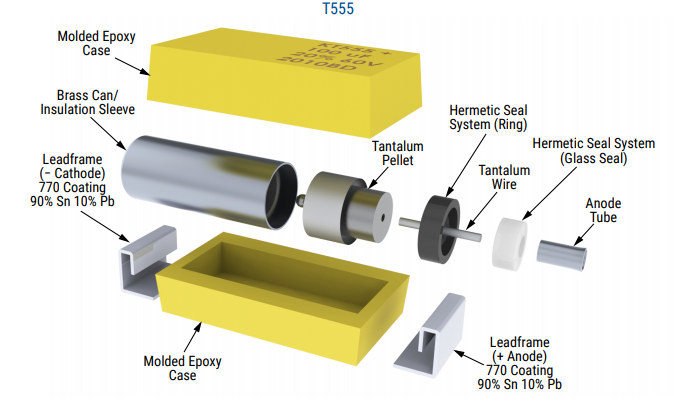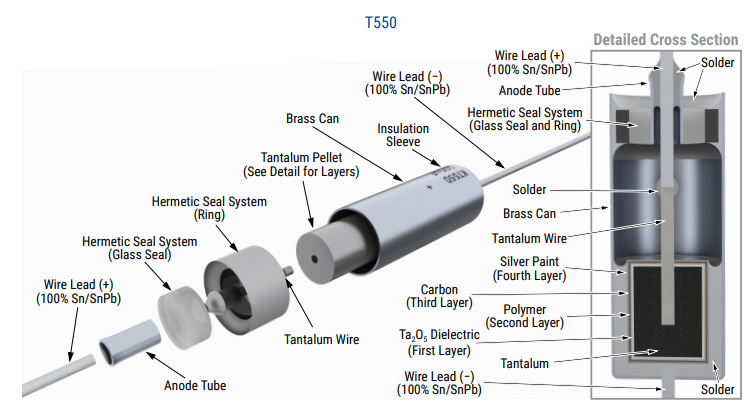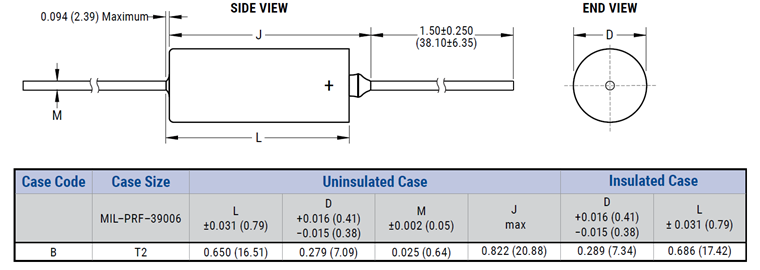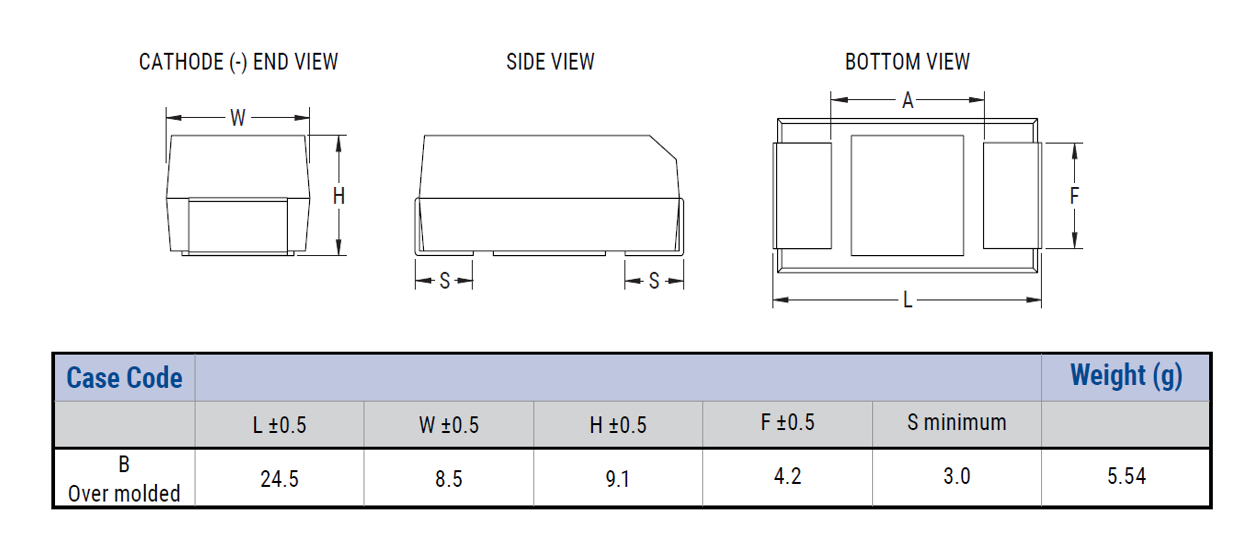The T550 (105ºC) and T551 (125ºC) axial leaded and T555/T556 surface mount polymer hermetically sealed (PHS) devices are tantalum capacitors with a Ta anode and Ta2O5 dielectric. A conductive organic polymer replaces the traditionally used MnO2 or wet electrolyte as the cathode plate of the capacitor. This results in very low ESR and improved capacitance retention at high frequency and low temperature.
The PHS device also exhibits a benign failure mode, which eliminates the case breach that can occur in wet tantalum capacitors. Additionally, this part may be operated at voltages up to 80% of rated voltage, with equivalent or better reliability than traditional MnO2 or wet tantalum capacitors operated at 50% of rated voltage.
PHS capacitors are available in two versions, axial through hole (a) and SMD version (b).
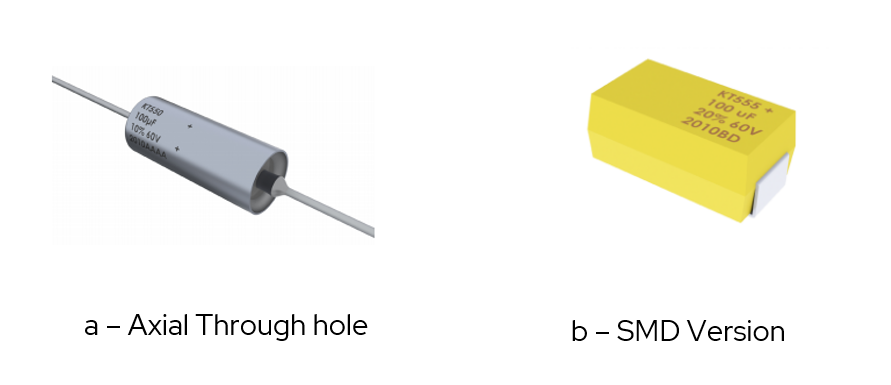
The T550 (105ºC) series, is qualified according the DLA drawing 13030 and the design includes the state-of-the-art F-Tech anode production technology, which eliminates hidden defects in the dielectric that, potentially can be responsible for a long-term degradation of the quality of dielectric layer. Also, PHS series are 100% simulated breakdown screened.
The anode design and production technology is based on several techniques as for example, the utilization organic lubricants that can be washed off the anodes at low temperatures. This provides carbon level in sintered anodes equal to that in the original powder. Carbon is tested in every production lot after the de-lubrication, and the process is repeated if carbon level is elevated in comparison to that in the original powder. Special passivation process resulting in very thin native oxide on anode surface when anodes are exposed to air after the powder sintering and F-Tech also provides strong attachment of the Ta lead wire to the sintered powder by replacing traditional embedded lead wire with argon welded one having large and strong welded nagged at the anode egress.
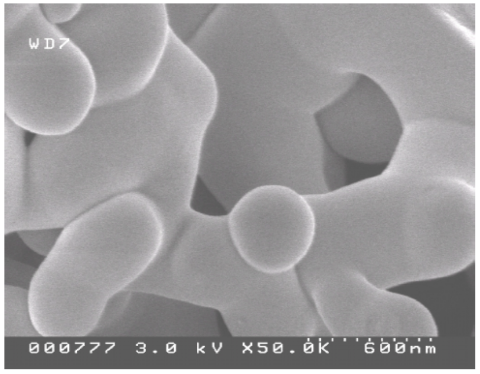
Figure 1 – Ta2O5 dielectric film formed on Ta anode manufactured with F-Tech
KEMET’s patented SBDS is a nondestructive testing technique that simulates the breakdown voltage (BDV) of a capacitor without damage to its dielectric or the general population of capacitors. This screening identifies hidden defects in the dielectric, providing the highest level of dielectric testing. SBDS is based on the simulation of breakdown voltage (BDV), the ultimate test of the dielectric in a capacitor.
Low BDV indicates defects in the dielectric, and therefore a higher probability of failure in the field. High BDV indicates a stronger dielectric and high-reliability performance in the field. This new screening method allows KEMET to identify the breakdown voltage of each individual capacitor and provide only the strongest capacitors from each lot.
The benefit of SBDS is illustrated by a minimum breakdown voltage greater than 2 X rated voltage as compared to Weibull Graded parts with breakdown voltages as low as 1.25 X rated voltage. Also, this is done without inducing wear out sometime associated with Weibull Grading.
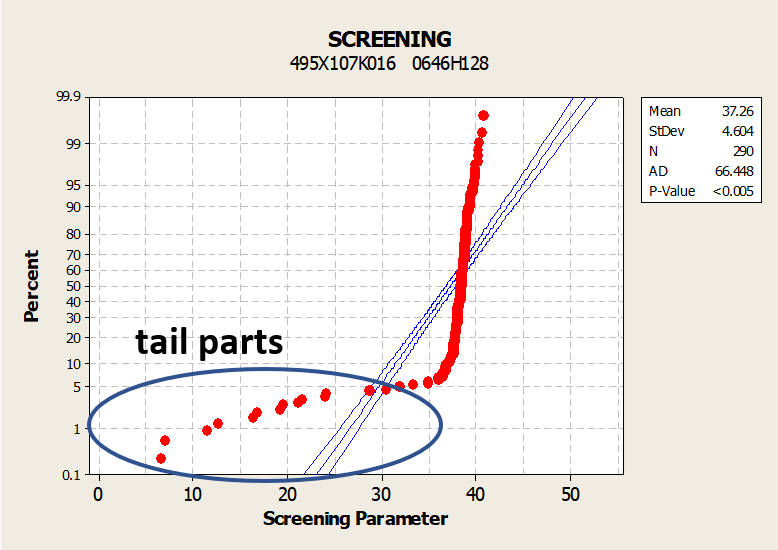
Figure 2 – Break-down voltage simulation (SBDS), identifies most reliable parts in any given batch
PHS Series, is the best alternative solution when defense and aerospace customers need to replace the aged wet tantalum technology, either because of the excessive cost of the solution due to the need of overdesign, or because the working conditions require additional performance from the capacitance point of view. Some of the advantages are presented in figure 3.
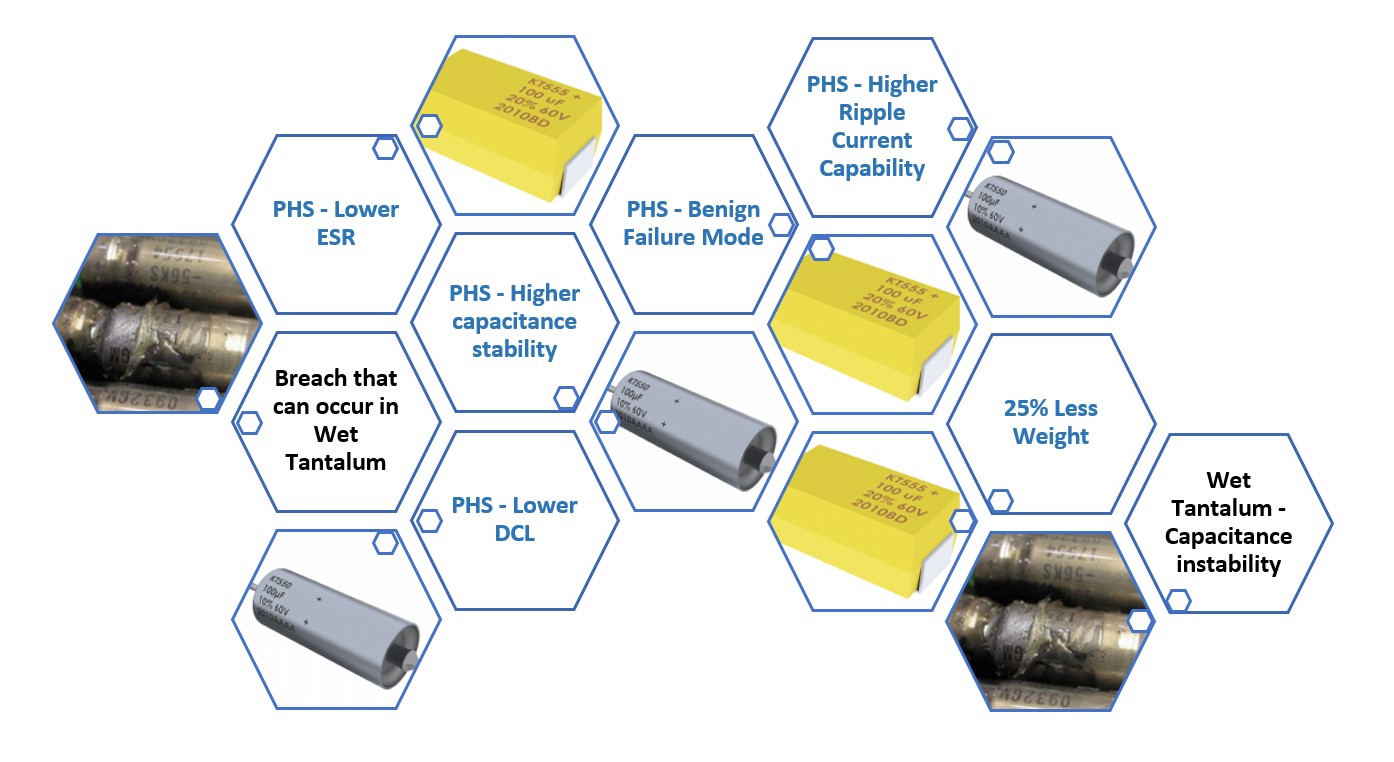
Figure 3 – Polymer Hermetically Sealed PHS advantages Vs Wet tantalum
PHS capacitors, are produced with solid cathode technology meaning that the second plate of the capacitor, immediately after the dielectric layer is produced with solid polymeric material in opposition with the old technology used to produce wet tantalum capacitors. Because of this construction evolution, the behavior of polymer capacitors in terms of temperature stability of capacitance and ESR, complemented with the possible variation of working frequency, makes this technology the best solution for defense and aerospace mission critical applications.
In the next plots, experimental measurements of capacitance over frequency of two capacitors (PHS and Wet tantalum) at two different temperatures, show how stable is the capacitance retention of the polymer capacitor. At 100 kHz, the PHS is moving from 49 µF to 43.4 µF when temperature drop to -55ºC. We need to remember that the both capacitors are 82 µF rated capacitance and the major loss, is as expected due to the impact of frequency, which is not the case of the wet, that seriously impacted by temperature and frequency.
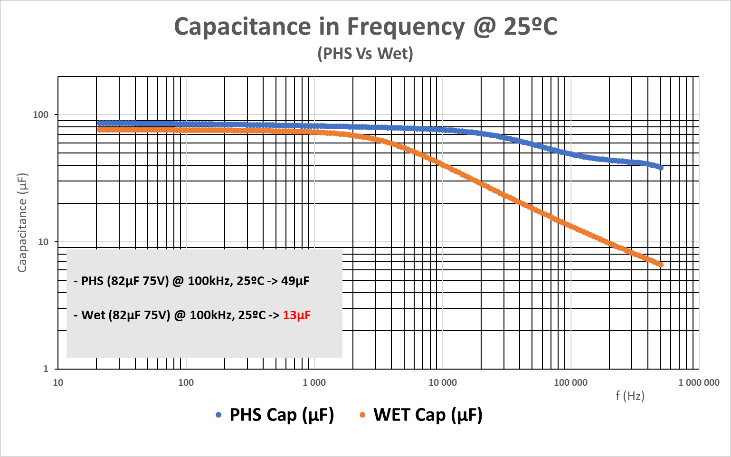
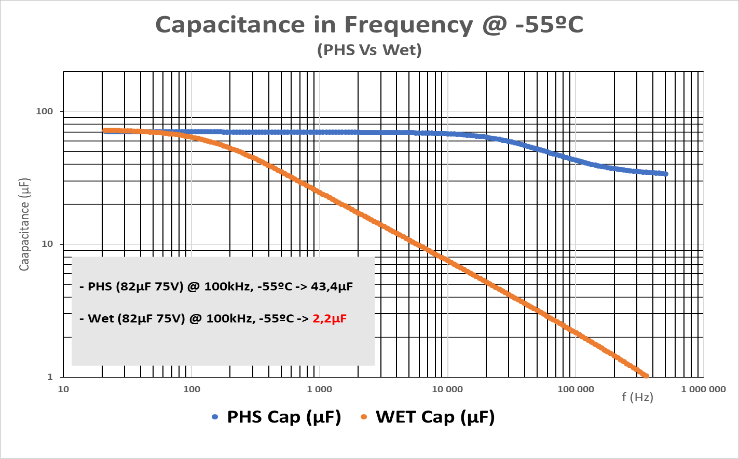
Figure 4 – Experimental electrical readings of capacitance at 25ºC and -55ºC over frequency up to 500 kHz
We easily understand the limitations of the wet technology when used in extreme environmental conditions and range of frequency that today can go up to 1 MHz. The 82 µF Wet tantalum shows real capacitance value of 2.2 µF when submitted to -55ºC and 100 kHz.
The next two plots are evidence of the capacitance behavior with frequency limited at 500 KHz.
It is clear the Capacitance stability offered by the solid cathode technology not only in frequency but also with temperature.
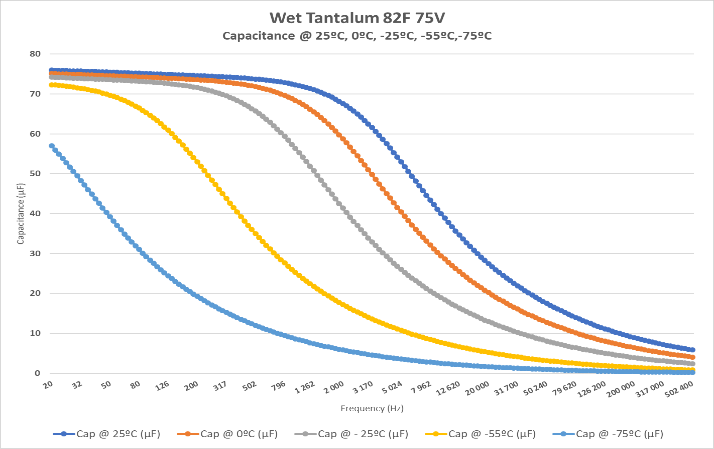
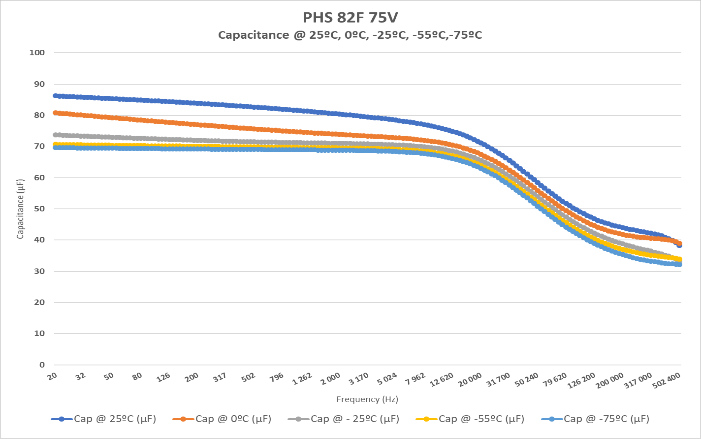
Figure 5 – Experimental electrical readings of capacitance PHS Vs Wet Tantalum
Aware of the electrical performance of this capacitance solution, KEMET developed with the US Defense Logistics Agency (DLA) the drawing 13030, with Group A and B screening for mission critical applications. The DLA drawing is aligned with the MIL-PRF-39006 requirements.
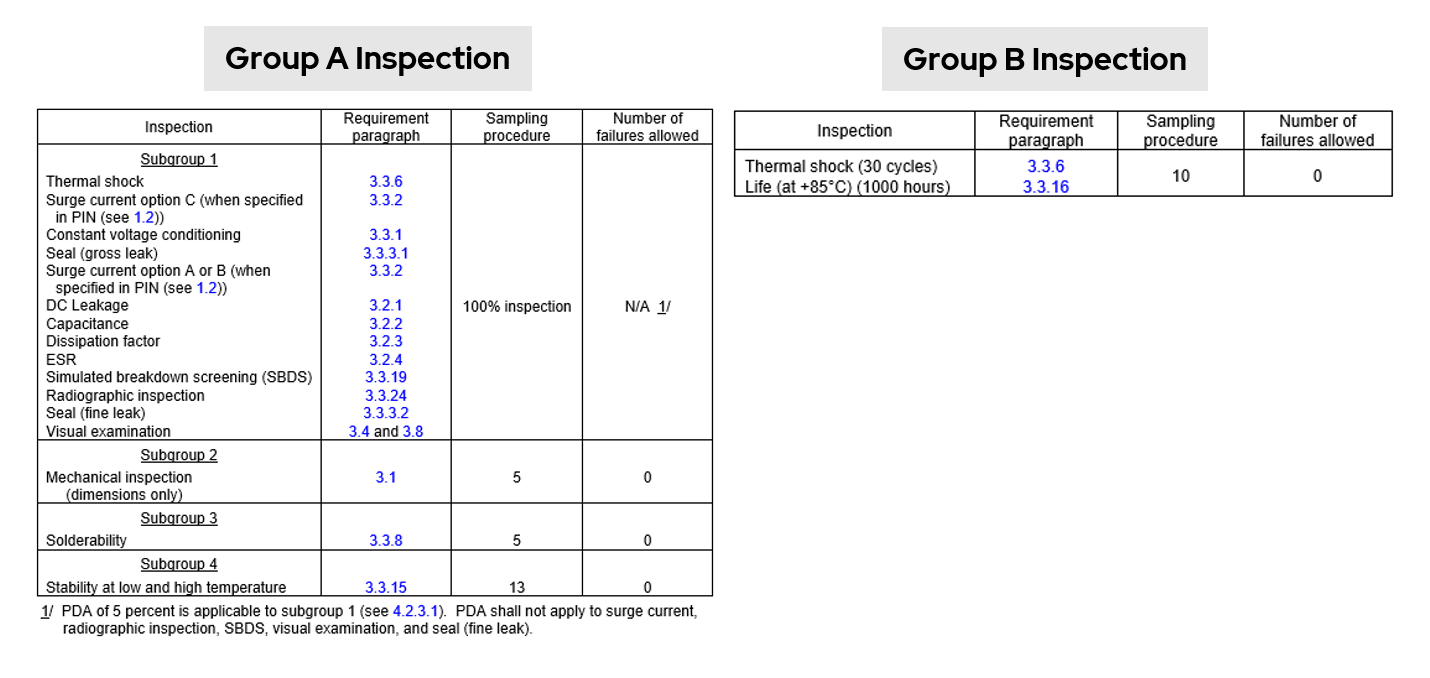
In order to be DLA qualified, T550 series is submitted to the following tests:
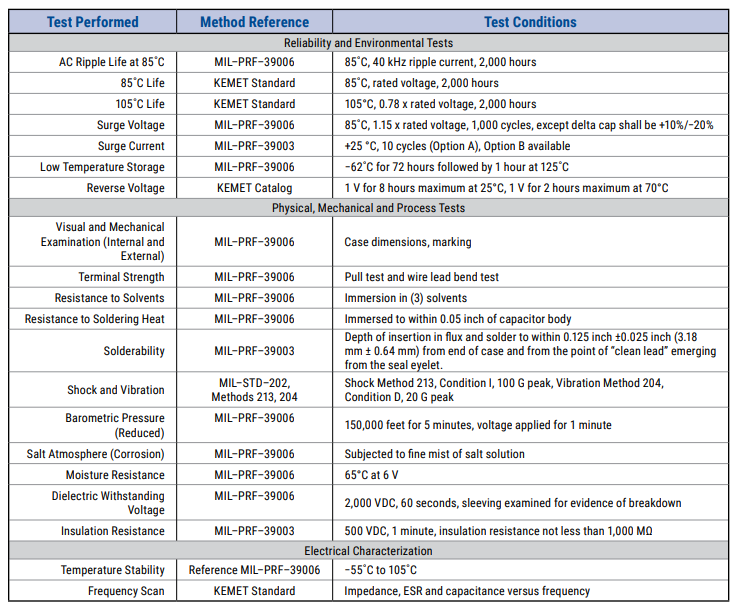
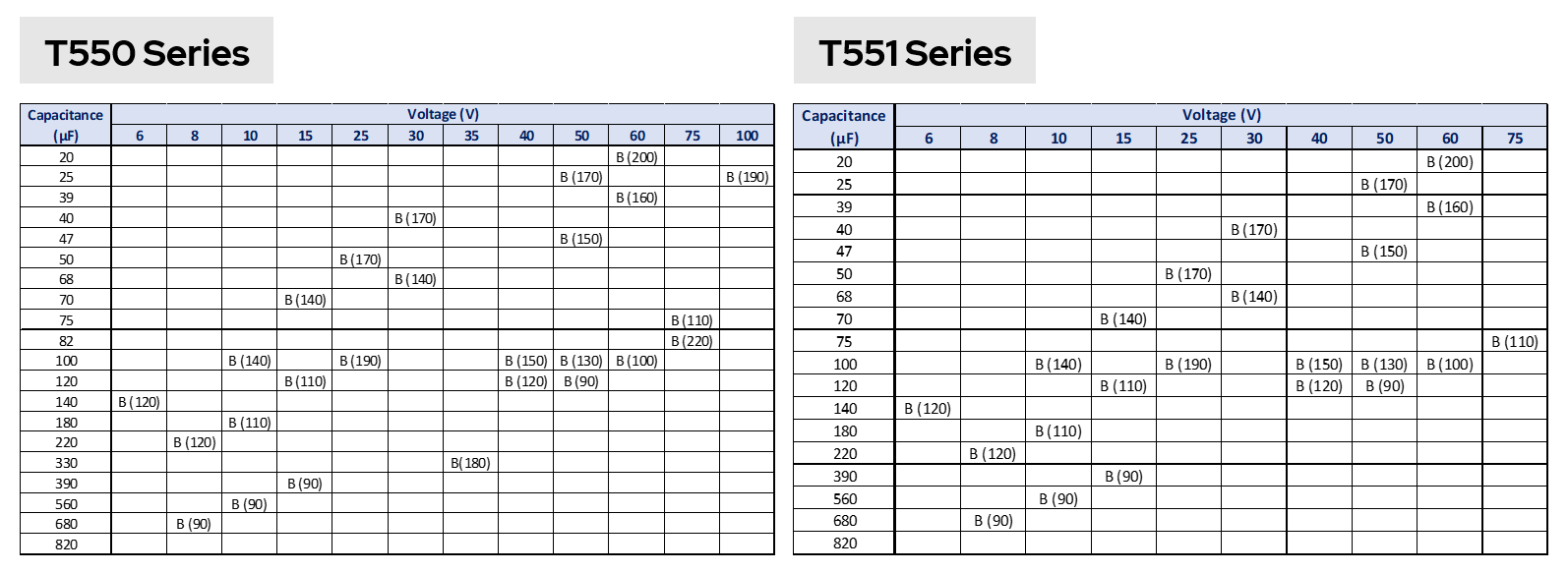
KEMET High Reliability PHS series, presents two different discrete configurations, through-hole and SMD. Details of the mechanical construction are presented below:
